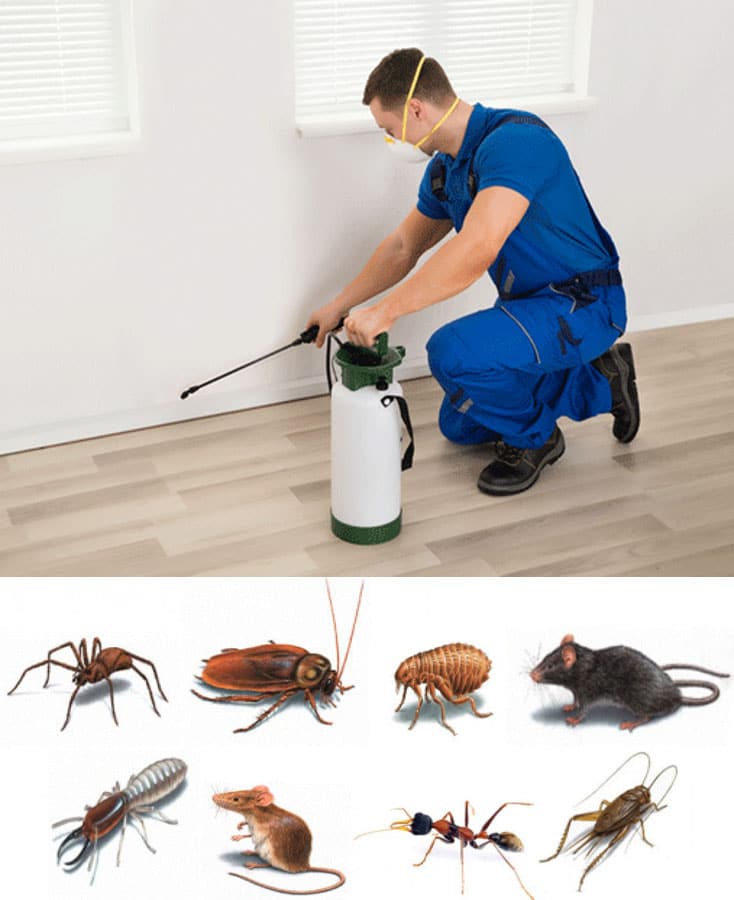Quality A1 Pest Control Services Charlotte - Secure Your Home
Quality A1 Pest Control Services Charlotte - Secure Your Home
Blog Article
Bed Insect Therapy Break Down: Contrasting Chemical Vs. Non-Chemical Solutions
In the world of insect control, especially when dealing with the consistent concern of bed bugs, the option in between chemical and non-chemical therapy remedies can be a critical one. Both strategies offer distinctive benefits and drawbacks, affecting factors such as performance, safety factors to consider, and general cost. By checking out the nuanced details of each approach, a more clear understanding of which path to seek in resolving a bed bug invasion can be achieved.
Effectiveness of Chemical Treatments
Chemical therapies for bed pest infestations have actually been extensively identified for their rapid and powerful effectiveness in eliminating these pests. When considering the performance of chemical therapies, it is critical to recognize that they can supply a complete and quick remedy to a bed insect problem.
Additionally, chemical treatments have the benefit of offering residual results, indicating that they can continue to remove bed pests also after the preliminary application. This residual activity is particularly useful in combating any kind of possible re-infestations. Furthermore, the rapid action of chemical therapies can bring alleviation to individuals dealing with extreme bed bug problems, allowing them to gain back control of their home rapidly.
Safety Concerns With Chemical Solutions
One crucial aspect that requires careful factor to consider when making use of chemical solutions for bed insect therapy is ensuring the safety of passengers and the setting. Exposure to certain chemicals utilized in bed pest treatments can lead to respiratory concerns, skin irritation, or various other negative reactions, specifically in individuals with pre-existing conditions or sensitivities.
In addition, the ecological influence of chemical solutions is another significant factor to consider. Some chemicals used in bed insect treatments may be hazardous to beneficial pests, wildlife, and environments if they leach right into the dirt or water supply. It is necessary to use chemical treatments carefully, following security standards, and taking into consideration less hazardous alternatives to reduce these risks and ensure the secure and reliable monitoring of bed bug invasions.
Advantages of Non-Chemical Methods
Taking into consideration the prospective safety problems and environmental impact associated with chemical options for bed pest treatment, exploring non-chemical methods provides a promising choice with several distinctive advantages. Non-chemical methods offer a much safer alternative for homes, particularly those with people, youngsters, or animals conscious rough chemicals. These approaches get rid of the risks of exposure to harmful materials, lowering the capacity for unfavorable health effects. Furthermore, non-chemical therapies are eco pleasant, as they do not add to air or water pollution, making them a sustainable choice for insect control.
In addition, non-chemical solutions can be hop over to these guys efficient in targeting bed pests, including hard-to-reach areas where chemical therapies may not pass through - A1 exterminators charlotte nc. Approaches such as heat treatment, vacuuming, vapor cleansing, and cushion coverings provide complete removal without the usage of dangerous chemicals.
Limitations of Non-Chemical Treatments

Furthermore, non-chemical therapies often require numerous applications to attain straight from the source effective removal. This can be time-consuming and may not always guarantee total elimination of all bed bugs and their eggs, especially in hard-to-reach or hidden places.
Additionally, the success of non-chemical treatments heavily relies on correct implementation and thoroughness, which can be testing for people without expert experience. Poor application of non-chemical methods might result in incomplete obliteration, resulting in consistent invasions and the demand for added treatments.
As a result, while non-chemical therapies have their advantages, it is vital to recognize these limitations and consider them when determining one of the most effective method for handling bed pest infestations.
Expense Contrast: Chemical Vs. Non-Chemical Options
Offered the restrictions connected with non-chemical therapies, an essential aspect to assess in the context of bed insect monitoring is the price comparison in between chemical and non-chemical options. In contrast, non-chemical treatments like warmth therapy or steam can be a lot more expensive, with costs ranging from $1,000 to $6,000 for a whole home. While the preliminary expense of chemical therapies may appear lower, several treatments may be called for to totally eradicate the invasion, possibly enhancing the general expense.
Conclusion

Taking into consideration the prospective security problems and ecological influence associated with chemical options for bed bug therapy, discovering non-chemical strategies presents an encouraging option with a number of distinctive advantages.Given the constraints connected with non-chemical therapies, a necessary aspect to examine in the context of bed bug management is the expense comparison in between chemical and non-chemical alternatives. In contrast, non-chemical therapies like heat therapy or steam can be a lot more expensive, with costs varying from $1,000 to $6,000 for an entire home. While the initial price of chemical therapies might appear lower, numerous treatments might published here be called for to completely get rid of the problem, potentially raising the general price.In conclusion, when contrasting chemical and non-chemical bed insect treatment alternatives, it is crucial to consider effectiveness, safety, benefits, restrictions, and cost.
Report this page